Aruba, Bonaire, and Curaçao, the ABC Islands, are the westernmost islands of the Leeward Antilles, basking in year-round sunshine in the far south of the Caribbean. All three have beautiful sandy beaches, colorful architecture, and dazzling coral reefs to explore.
You’ll also find plenty to enjoy beyond the beaches. Cycling tours, off-road ATV adventures, caves, historic houses, vibrant markets, and street art await.
Each island shares historic ties with the Netherlands, so you’ll find Dutch influences in the cuisine, place names, and language. But their individual cultures are different.
Multicultural Aruba is a playground for sun-seekers, while sleepy Bonaire is more about nature, with divers flocking to explore its coral reefs. Curaçao blends Dutch, Latin, and Asian influences. All three enjoy a high standard of living and exude a laid-back Caribbean charm.
Why Visit the ABC Islands
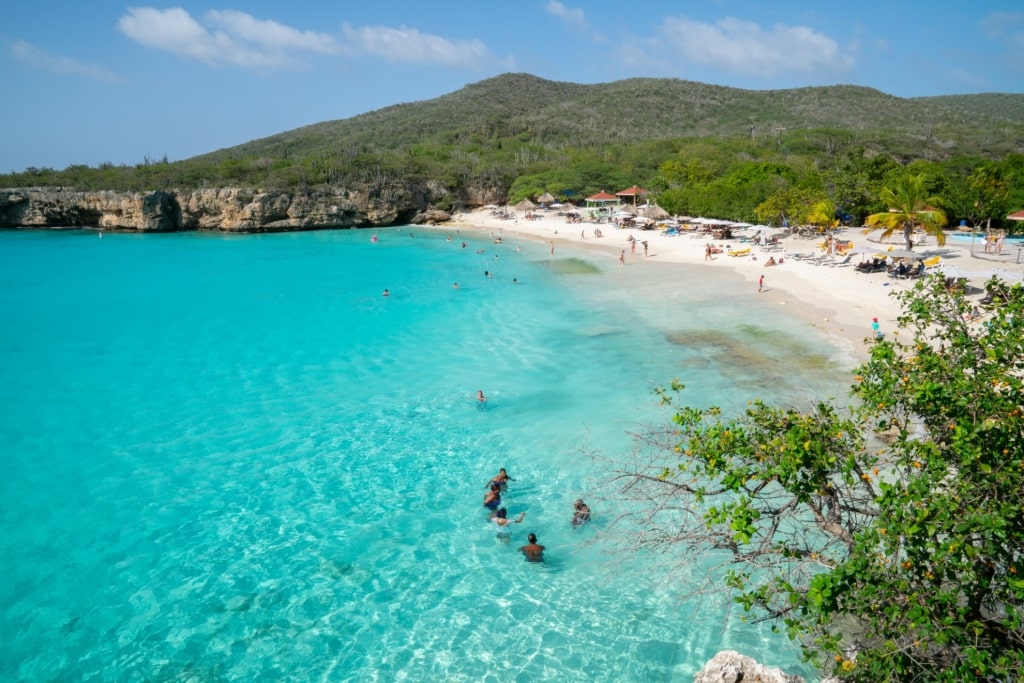
Knip Beach, Curaçao
The ABC Islands are quite different from the greener, more mountainous islands further north and east in the Caribbean. These islands are more arid, with almost desert-like interiors and beautiful sandy beaches—some would say the finest in the Caribbean, thanks to the astonishing turquoise hue of the water.
They also have a climate that is rarely affected by hurricanes, making these great destinations to visit in what’s low season elsewhere in the region. Meanwhile, constant trade winds mean that this is a top destination among wind- and kite-surfers.
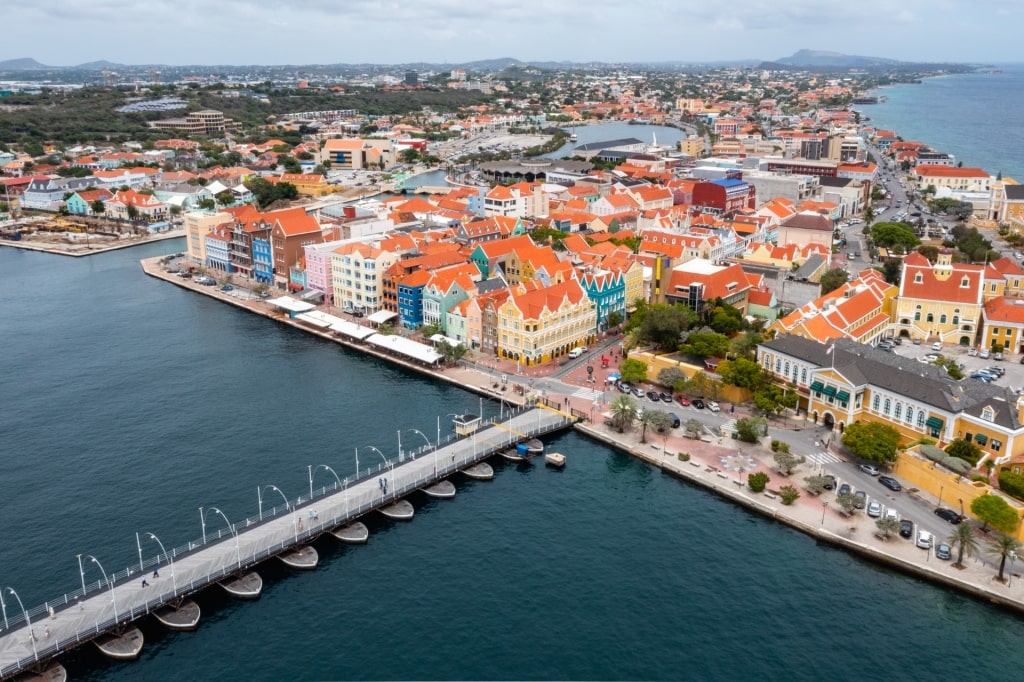
Willemstad, Curaçao
What’s more, the Dutch influence on the architecture and the food is fascinating. You’ll find markets selling wheels of Dutch cheese and Asian restaurants—the legacy of the Dutch colonization of Indonesia—where you can try rijsttafel, a spectacular array of spicy dishes.
There’s plenty to see and do on each island, from off-road driving adventures to wildlife encounters and spectacular snorkeling and scuba diving. The ABC Islands are tiny, so it’s easy to fit different activities into a single day if you want to mix cultural activities with beach time.
History & Culture

Kralendijk, Bonaire
The islands were originally inhabited by the Arawak, an indigenous tribe. The first European to arrive was Alonso de Ojeda, a Spanish explorer who sailed to the islands in 1499. The Spanish colonized the islands and quickly established them as a base for their Caribbean operations, importing slaves from Africa to work on the sugar plantations.
The Spaniards were ousted in 1634 by the Dutch, and the islands fell under the control of the Dutch West India Company, which continued to exploit slaves. The Netherlands became wealthy from its Caribbean slave and sugar trade operations.
When slavery was abolished in 1863, a new source of income had to be found. This eventually came in the early 20th century, when oil was discovered in Venezuela, and refineries were developed in Aruba and Curaçao.

Aruba
Aruba and Curaçao, although now independent, are still part of the Kingdom of the Netherlands, while Bonaire is what’s called a “public body,” similar to a municipality of the Netherlands.
Dutch is spoken in all three islands, as well as English and Papiamentu, a form of Creole that incorporates elements of Portuguese, Dutch, English, and Spanish.
Wildlife & Nature

Pink flamingos
You’ll spot an array of Caribbean wildlife as you explore the islands. Lizards, goats, snakes, bats, colorful butterflies, and brilliant pink flamingos inhabit all three islands.
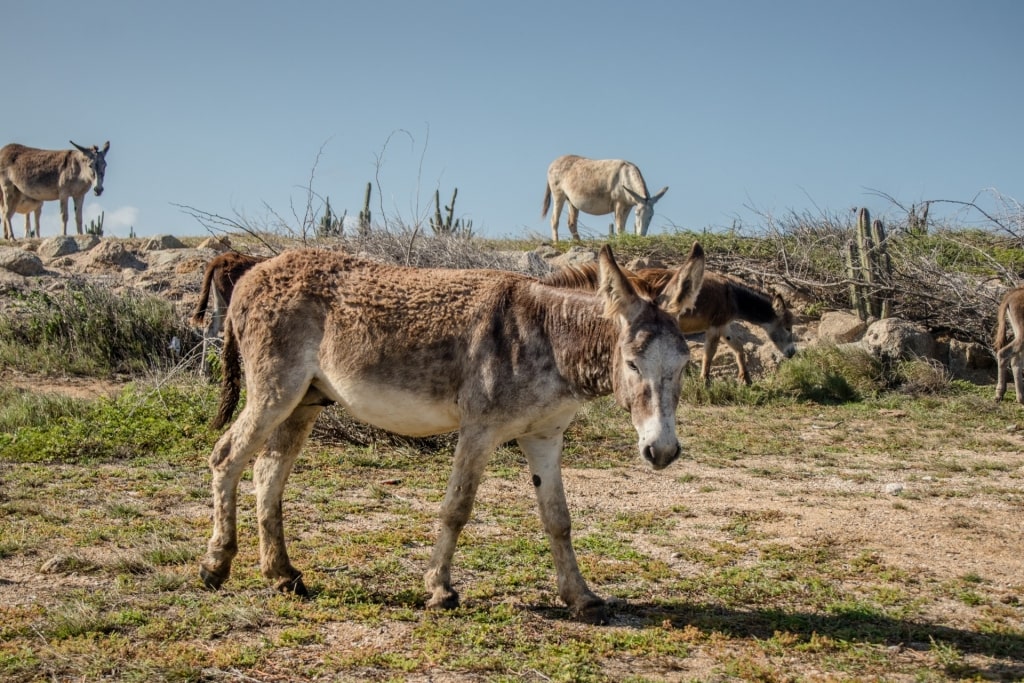
Santa Cruz Donkey Sanctuary, Aruba
One of the best things to do in Aruba is to visit the Butterfly Farm for a closer encounter or the Ostrich Farm, where you can hand-feed the residents. Another option is the Santa Cruz Donkey Sanctuary, where injured wild donkeys are rehabilitated. In Curaçao, meanwhile, you can spot endangered white-tailed deer in Christoffel Park.
Birdwatchers will be in heaven in the ABC Islands, as there are so many colorful species. Look out for tiny, shimmering hummingbirds, the vivid, orange and black Venezuelan troupial, and yellow-headed parakeets. On the coast, you’ll see brown pelicans, frigatebirds, and ospreys.
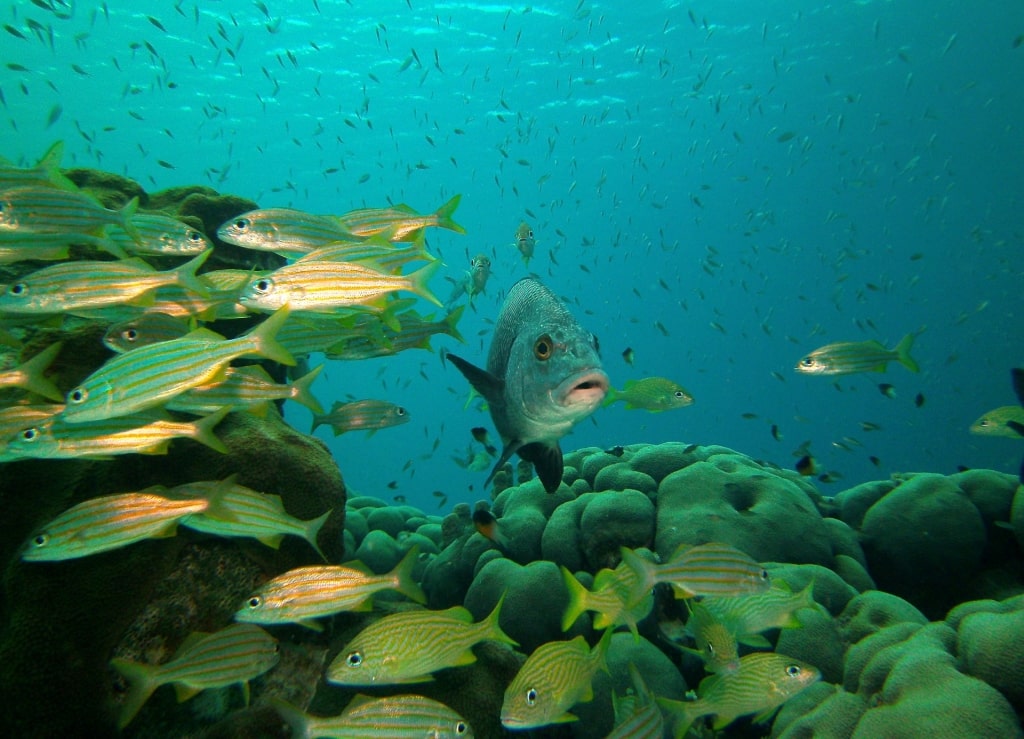
Bonaire National Marine Park
In the water, with luck, you’ll see graceful sea turtles, dolphins, and stingrays, as well as dozens of species of vibrant tropical fish. Bonaire, in particular, has spectacular underwater life, with its coral reefs protected as the Bonaire National Marine Park.
Bari Reef is another one of the best diving spots in the world, where you could see barracuda, octopus, and tarpon.
Things to Do & Attractions in Aruba
View Marine Life at De Palm Island

De Palm Island, Aruba
While free diving and snorkeling are great ways to see Aruba’s colorful marine life up close, nothing beats a helmet dive, especially on De Palm Island, located just a five-minute ferry ride from the mainland.
If you’ve never taken a helmet dive, also called a Sea Trek, it’s a unique experience where you walk along the ocean floor while completely submerged. It’s something even non-swimmers can enjoy, as there’s no actual swimming involved.
The high-tech helmet is designed to provide a constant flow of air while you’re fully submerged. On De Palm Island, you’re likely to spot fish of all sizes and colors, from blue parrotfish and angelfish to pufferfish and sergeant majors, plus coral reefs teeming with marine life. The water around Aruba offers excellent visibility, so you’re really able to make the most of your time underwater.
See the Fofoti Trees on Eagle Beach
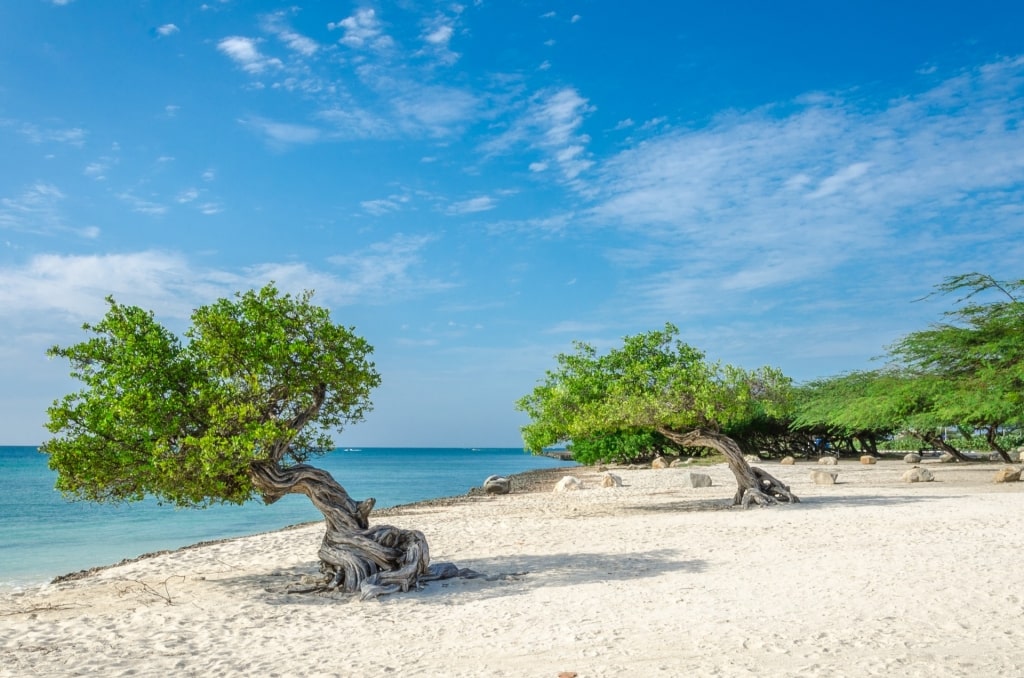
Eagle Beach, Aruba
Arguably the most famous and most photographed beach in the ABC Islands, Eagle Beach is a wide expanse of soft, white sand and sea that’s the most intense shade of turquoise imaginable. The iconic feature of Eagle Beach is the two fofoti trees here, their gnarled trunks twisted to point the foliage to the southwest, the direction in which the wind blows.
After photographing the trees, there’s plenty to do on this Aruban beach, from watersports to relaxing on a sun lounger or snacking at some of the restaurants and food trucks along the sand.
Dive Over Wrecks

Antilla Shipwreck, Aruba
Certified scuba divers will love Aruba, where there are 11 wrecks and over 20 dive sites. The underwater life is exceptional, and you should spot everything from lobsters to stingrays, moray eels, octopuses, and even tiny seahorses.
One of the best places to visit in Aruba is the Antilla Shipwreck, a vast German ship that was scuttled by the Dutch in 1940 and now lies in 60 feet of clear water. It’s populated by sponges, corals, and dozens of species of marine creatures.

SS Pedernales, Aruba
Other scuba diving spots in Aruba include the Harbor Tugboat, which lies at 80 feet and is now encrusted with sponges and coral. Beginners can tackle the SS Pedernales, an oil tanker that was sunk by a U-boat in 1942 and today lies in just 24 feet of water, broken into several sections and teeming with life.
Learn About the Healing Properties of Aloe Vera
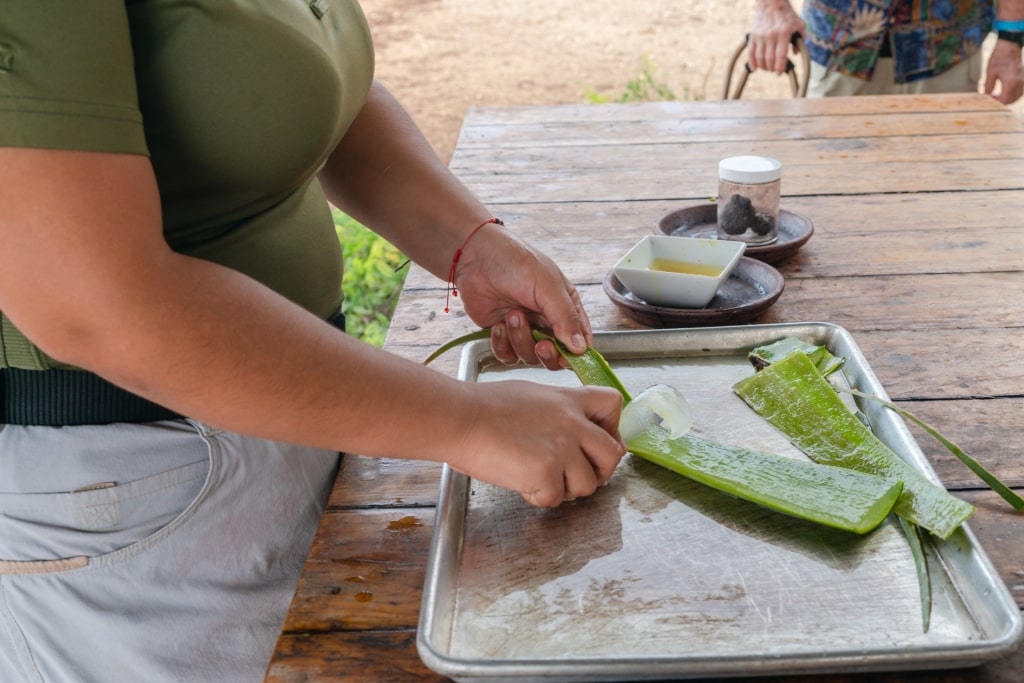
Royal Aruba Aloe Factory, Aruba
Learn about the healing powers of aloe vera gel, harvested from the aloe that grows all over the islands. The plant is farmed and processed at the Royal Aruba Aloe Factory, where it is turned into a fragrant range of skin, hair, and after-sun products.
The factory has been here since 1890, and a tour will tell you all about the history of aloe on the island. You’ll have a chance to sample and buy products from the source, too; aloe vera is especially helpful and soothing if you’ve overdone the sun tanning.
Things to Do & Attractions in Bonaire
Dip Into Bonaire’s Past
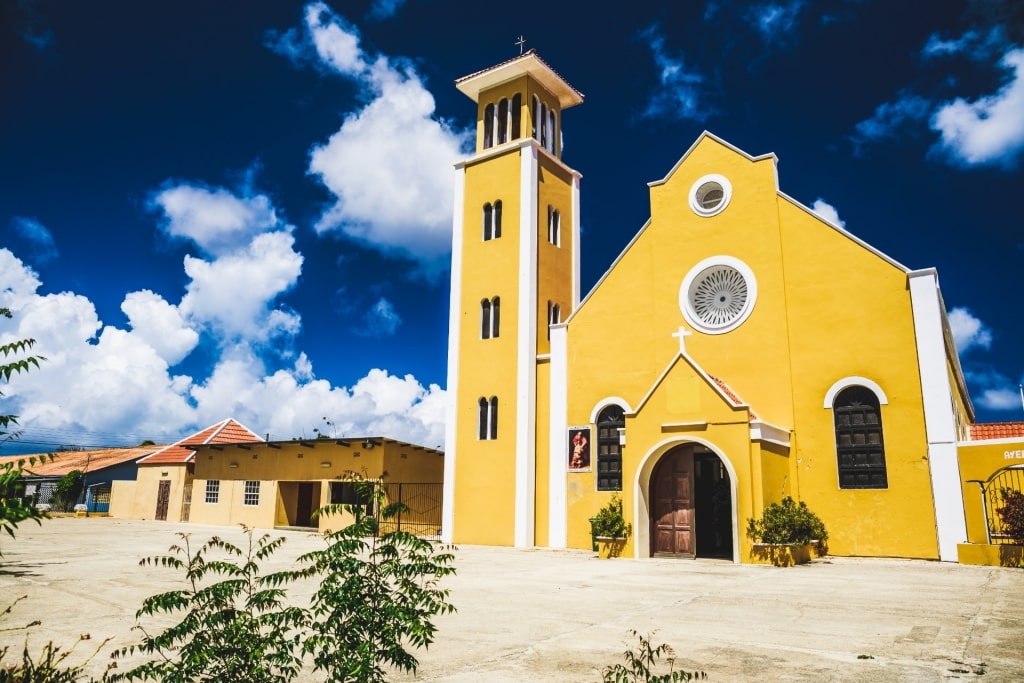
Rincon, Bonaire
One of the best things to do in Bonaire to explore its history is to visit Rincon, the oldest village in the Dutch Caribbean to have been continually inhabited.
Rincon has stood here since the early 16th century, when it was settled by the Spanish. Later, it was home to slaves who lived here with their families and worked the salt pans, a particularly punishing task.
You can visit an old plantation house, which is home to a small museum containing household items, furniture, and tools from that dark time in the island’s history.
Cycle Bonaire’s Coastline

Te Amo Beach, Bonaire
Bonaire’s tranquil coastline lends itself to exploration on two wheels. You can pedal for around 12 miles along a paved ocean road, taking in dramatic views of the historic lighthouse and the stark salt flats, where old slave huts still stand.
You’ll end the trip at the beautiful Te Amo Beach, one of Bonaire’s best beaches. Here, you can relax on the soft sand, cool off in the aquamarine shallows, or snorkel over coral reefs.
Sail to Klein Bonaire
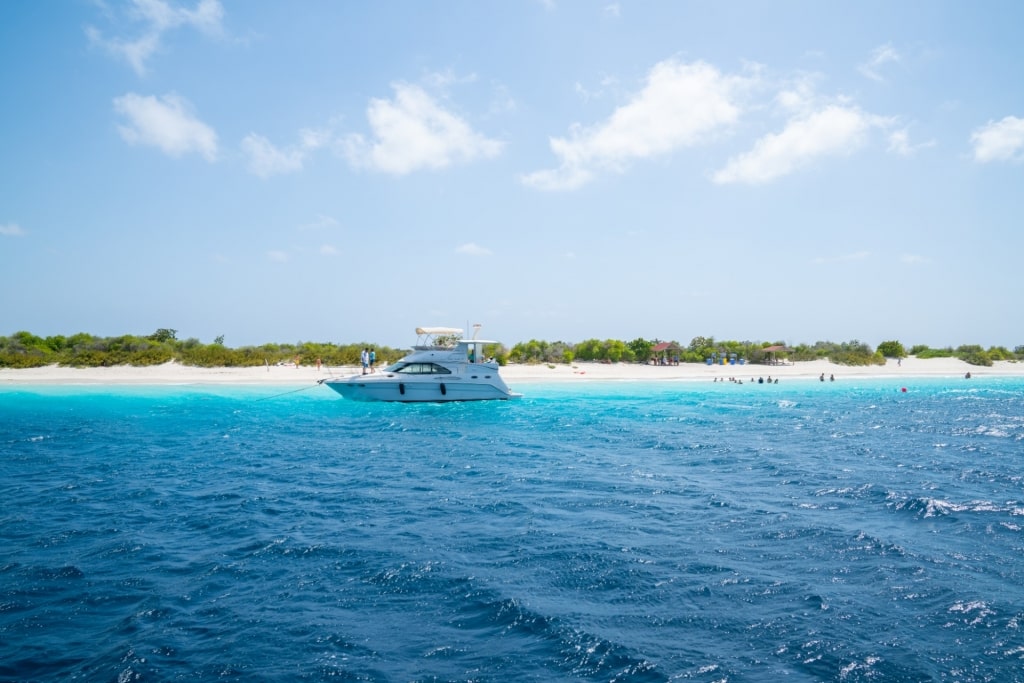
Klein Bonaire
Sail to serene Klein Bonaire, an uninhabited, 1,500-acre island surrounded by reefs, on a Samur, a traditional Siamese junk.
The thrill of the sailing expedition is combined with snorkeling over magnificent Caribbean reefs, where you could see five different species of sea turtles as well as dazzling shoals of reef fish.
Explore Lac Bay National Park
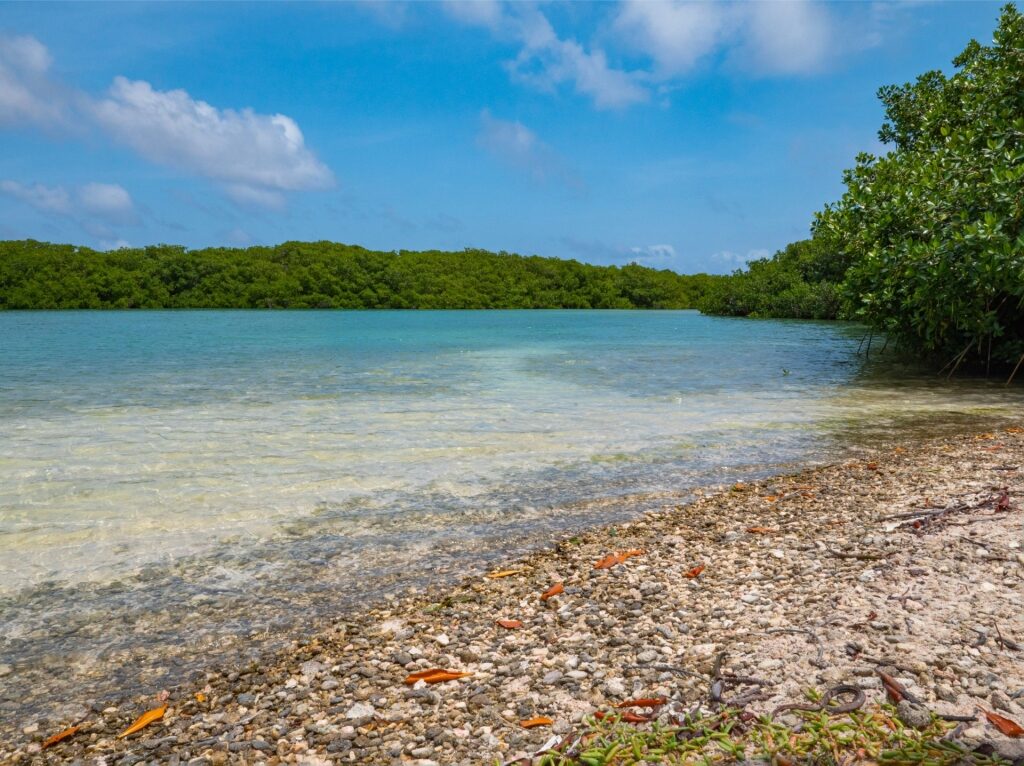
Lac Bay National Park, Bonaire
A really fun way to explore Bonaire is with a sightseeing safari through Lac Bay National Park, home to one of the best-preserved mangrove systems in the Caribbean. Most of the safari vehicles are open-air, allowing full visibility of the surrounding nature. They also head off-road through mangrove forests and wetlands, where you might spot flamingos, herons, iguanas, and donkeys in their natural habitat.
Depending on how much time you have, it might be worth stopping for a quick swim at one of the more secluded beaches in the area, or renting a kayak to experience the mangroves from a different perspective. Lac Cai Beach is a popular pit stop on these tours, as it is fairly quiet yet as picturesque as they come, with white sand and glistening turquoise water.
Things to Do & Attractions in Curaçao
Wander Around Willemstad

Willemstad, Curaçao
Curaçao’s buzzing little capital is a slice of the Netherlands in the Caribbean—with colors to match. The gabled houses along the Handelskade, the waterfront quay, are a sight to behold, in jazzy shades of orange, turquoise, sky-blue, and pale pink.
The city center is divided by Sint Anna Bay, spanned by the Queen Emma Pontoon Bridge, also known as the “Swinging Old Lady”.

Floating Market in Willemstad, Curaçao
Once you’ve admired the bridge, explore some of the markets. The Floating Market to the north of Handelskade is vibrant with fresh fruit and fishermen selling their day’s catch.
Punda, a district dating back to the 17th century, is a great place to head for traditional Dutch cheese and Delft figurines. The striking 17th-century Fort Amsterdam is in the same area. Built to defend the island from pirates, the fort today houses the local government.
Bask on Knip Beach
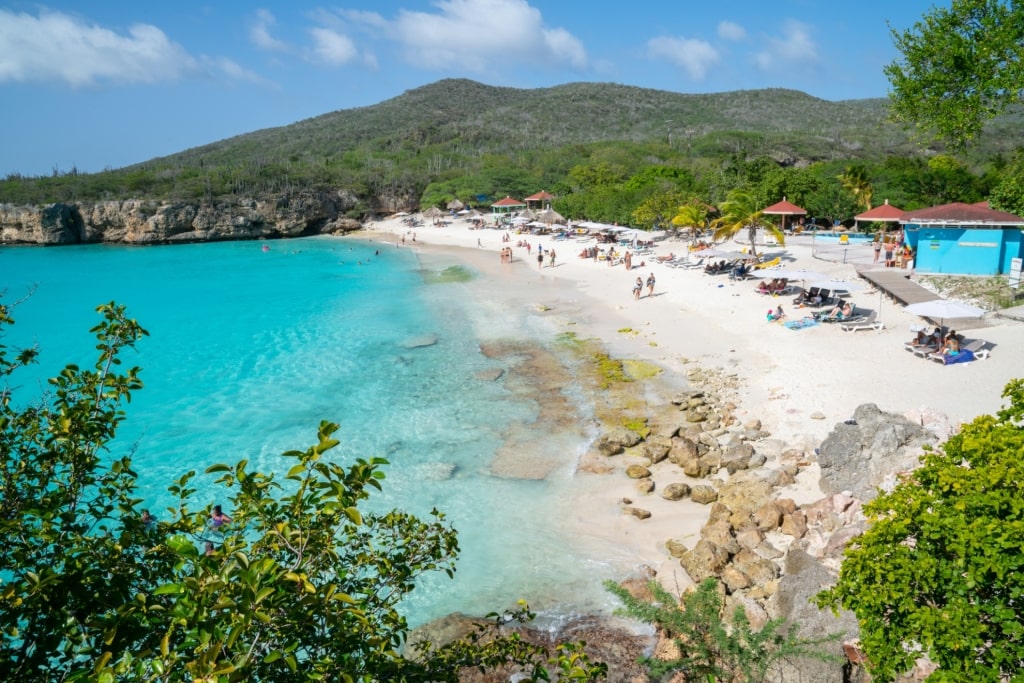
Knip Beach, Curaçao
Grote Knip, the wider of the two Knip beaches, is one of the most beautiful beaches in Curaçao. This sweep of sugary sand is backed by low-lying green hills, the water a mesmerizing shade of aquamarine.
This is a public beach, and as such, is relatively free of facilities, which is part of its rustic charm. You’ll find umbrellas to rent, though, and a food truck selling cold smoothies.
Snorkel in The Blue Room
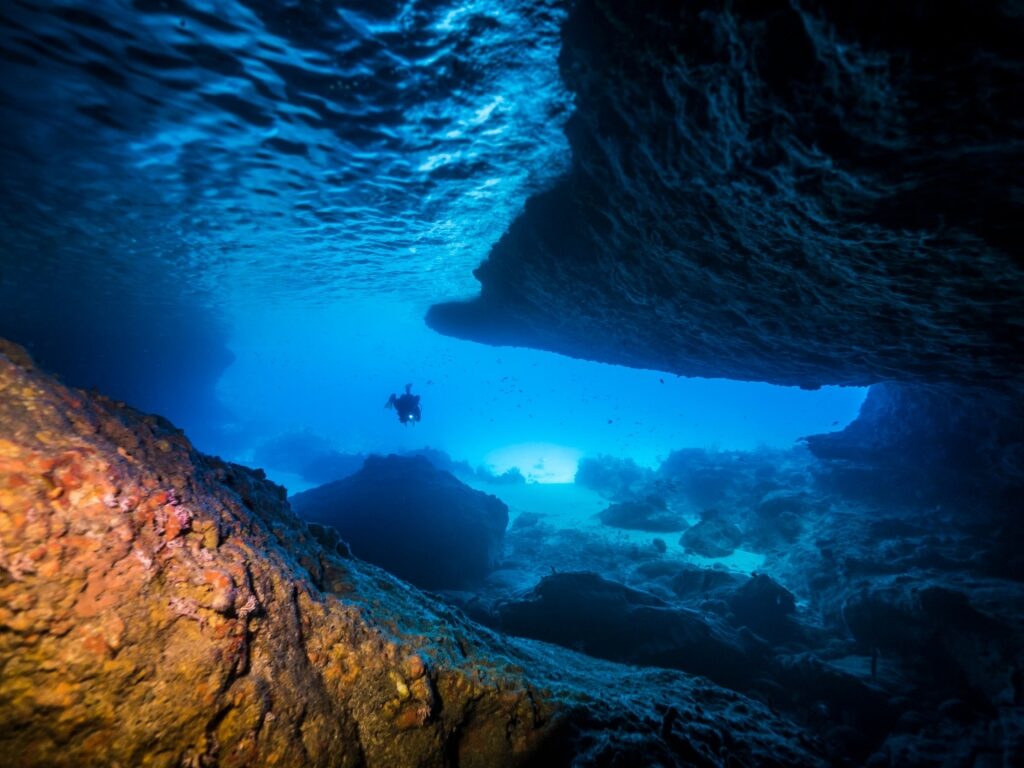
The Blue Room, Curaçao
There is no shortage of scenic snorkeling spots in Curaçao, but The Blue Room is easily one of the most iconic. The cave gets its name from the intense blue hue that fills the space once you’re inside.
To get there, you’ll need to take a boat or join a tour that sails directly to the entrance of the cave. Most swimmers can handle entering it, although it does require holding your breath while swimming through a short underwater opening. If you’re somewhat claustrophobic, that part can be a bit challenging, but if you’re up for it, it is well worth it.
Once inside, it is incredible to see how the sunlight transforms the water into glowing shades of blue, with fish darting all around.
See the Sunset on a Catamaran Cruise

Catamaran cruise in Curaçao
After an adrenaline-pumping snorkel in The Blue Room or other Curaçao dive spots, you’ve more than earned a sunset cruise around Willemstad. Catamarans typically depart from Caracasbaai Pier, and once onboard, you can order a rum punch or soda at the open bar and settle into a comfortable seat.
The ABC Islands are known for their steady trade winds, so it is helpful to secure your hat and pack a light sweater in case it gets breezy. Watching the skies turn pink, orange, and gold while the colorful buildings of Willemstad come into view is truly something special.
Food & Drink

Mahi-mahi
The food and drink in the ABC Islands have been influenced by the Netherlands, certainly, but you’ll find everything from Portuguese to Asian flavors in the local dishes you try.
Seafood is abundant in all the islands, found on its own, served with a spicy Creole sauce, or in a hearty stew. Mahi-mahi, grouper, and lionfish are all popular—and by eating lionfish, you’re doing the ecosystem a favor, as it’s an invasive and unwelcome—if tasty—species.
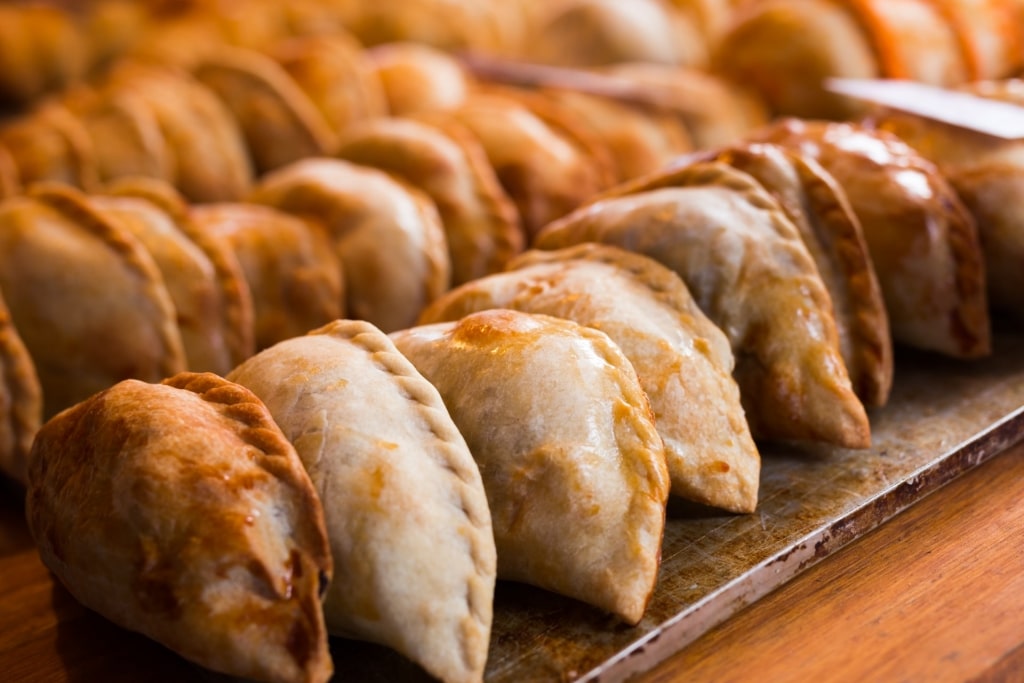
Pastechi
A popular dish in Aruba is keshi yena, a combination of meat, vegetables, and dried fruit baked inside a large ball of cheese. For snacks, you can’t go wrong with pastechi, the island’s answer to empanadas.
Pan bati is a sweet flatbread that locals eat with soups and stews, or with sugar, like a pancake. If you like Asian food, head for an Indonesian restaurant for rijsttafel, a banquet of dishes based on rice, noodles, meats, fish, spring rolls, sambal, which is a chili sauce, and peanuts.
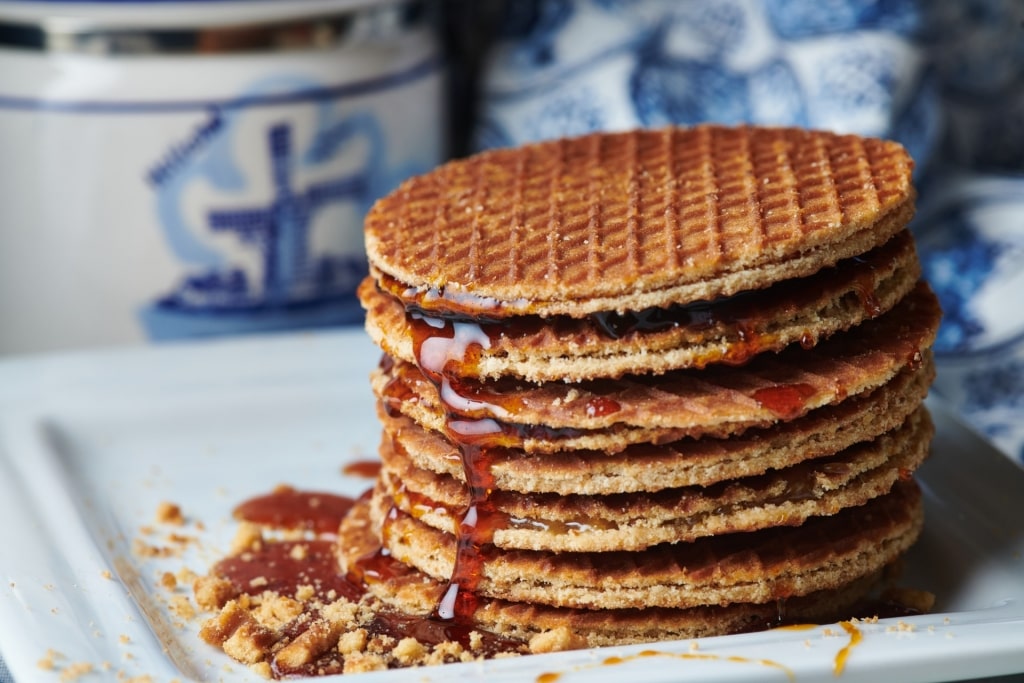
Stroopwafels
You’ll find similar Dutch dishes in Curaçao, including raw herring with pickles and waffles with cream and sweet toppings. Stroopwafels, which you can buy in packs to take home, are thin wafers with caramel in between and are absolutely delicious with coffee.
For Caribbean flavors, try karni stoba, a spicy goat meat stew. Or arepas, which originate in Venezuela and are stuffed with anything from meat to cheese, avocado, or corn.

Blue Curaçao
An unmissable thing to do in Curaçao is to visit the Curaçao Liqueur Distillery at Landhuis Chobolobo, home of the famous Blue Curaçao. This bright blue liqueur has been made from Curaçao’s oranges, descendants of the bitter Valencia oranges imported by the Spanish, since 1896.
The blue color is added for visual effect, not flavor, and will form the basis of cocktails that will be the talking point of any party.

Gumbo
Bonaire’s cuisine is similar to that of its neighbors in that it features a lot of seafood and goat meat. Guiambo, like gumbo, is a rich seafood stew, in Bonaire’s case, featuring okra.
Many savory dishes are accompanied by pika siboyo, a condiment of onions marinated with spicy peppers and vinegar.
Tips for Visiting the ABC Islands

Curaçao Liqueur Distillery
Make a point of sampling the local cuisine, which has Dutch roots as well as African, Asian, and Portuguese influences.
If you want to buy Dutch products like Gouda or Edam cheese and are not planning a trip to the Netherlands, this is the place to stock up on gift boxes. That, or a bottle of Blue Curaçao, the brightly colored liqueur for which Curaçao is famous.
Be aware of the local currency. Dealing with the different currencies in the ABC Islands can be confusing. Aruba uses the Aruban guilder, AWG, and Curaçao, the Antillean guilder, NAF, both of which are fixed to the US dollar at approximately 1.80 to $1.
However, neither is interchangeable when you travel between the islands. Bonaire uses the US dollar. Luckily, US dollars are widely accepted on all three islands, and you will even find ATMs dispensing dollars.
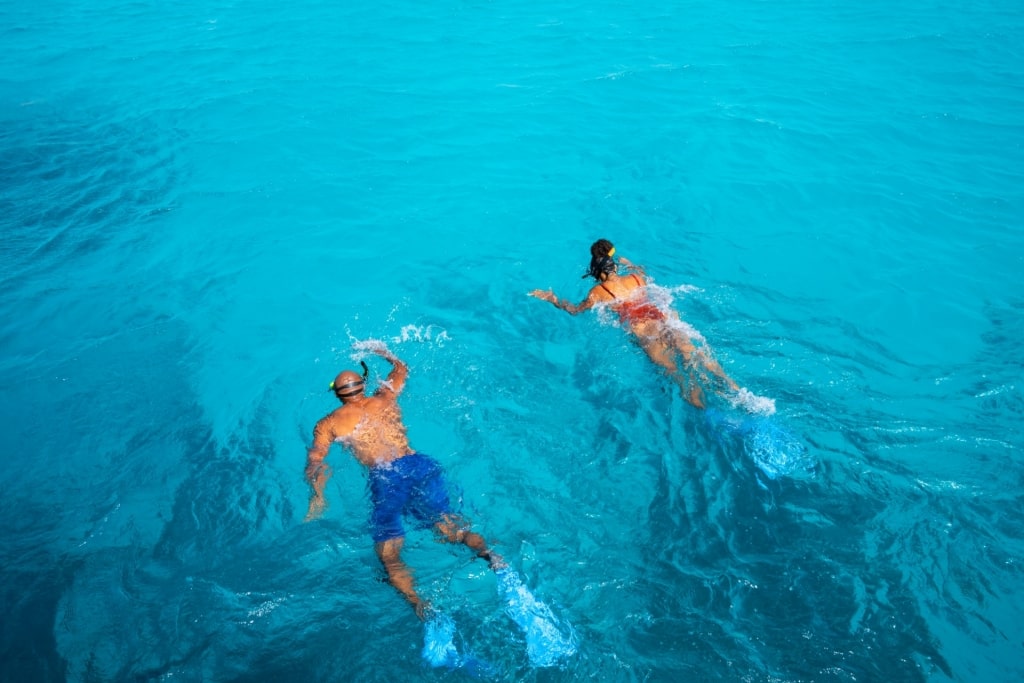
Snorkeling in Bonaire
Make time to explore the underwater world as the ABC Islands have some of the finest snorkeling and scuba diving in the world. If you don’t want to dive, there are glass-bottomed boat tours, glass-bottomed kayaks, and helmet diving, where you walk on the sea floor in a special helmet that doesn’t require you to wear a mask or use a regulator.
Best Time to Visit the ABC Islands

Bonaire
The best time to visit the ABC Islands is from mid-January through May. Unlike the rest of the Caribbean, which tends to be wetter in May, these are the dry months, with warm, sunny days.
Essentially, though, the ABC Islands lie outside the hurricane belt, so they are much less affected by seasonal storms from June to November. Although November does receive rainfall, this usually comes in the form of short, sharp showers that clear the air. In effect, you can enjoy your experience in the ABC Islands at any time of year.
FAQs
Which ABC island is the best?

Bonaire
Deciding whether to visit Aruba, Bonaire, or Curaçao is a tough call, as all three islands have much to offer in terms of beaches, diving, and local culture.
While no island is “better” per se, there are a few differentiators that may or may not help guide your choice. For example, Aruba is the most developed of the three, especially when it comes to public beaches where you can swim, snorkel, or lie out in the sun.
Bonaire is quieter and better suited for nature lovers looking to dive or snorkel over the reefs with fewer crowds. There are also lots of dive sites you can reach right from the shore rather than via a speedboat.
As for Curaçao, the island does a good job of striking a balance between the two. Travelers can choose to stroll through the vibrant downtown of Willemstad, a UNESCO World Heritage Site, or hit the beach for a few hours of rest and relaxation.
How do you compare the landscapes of the ABC Islands?
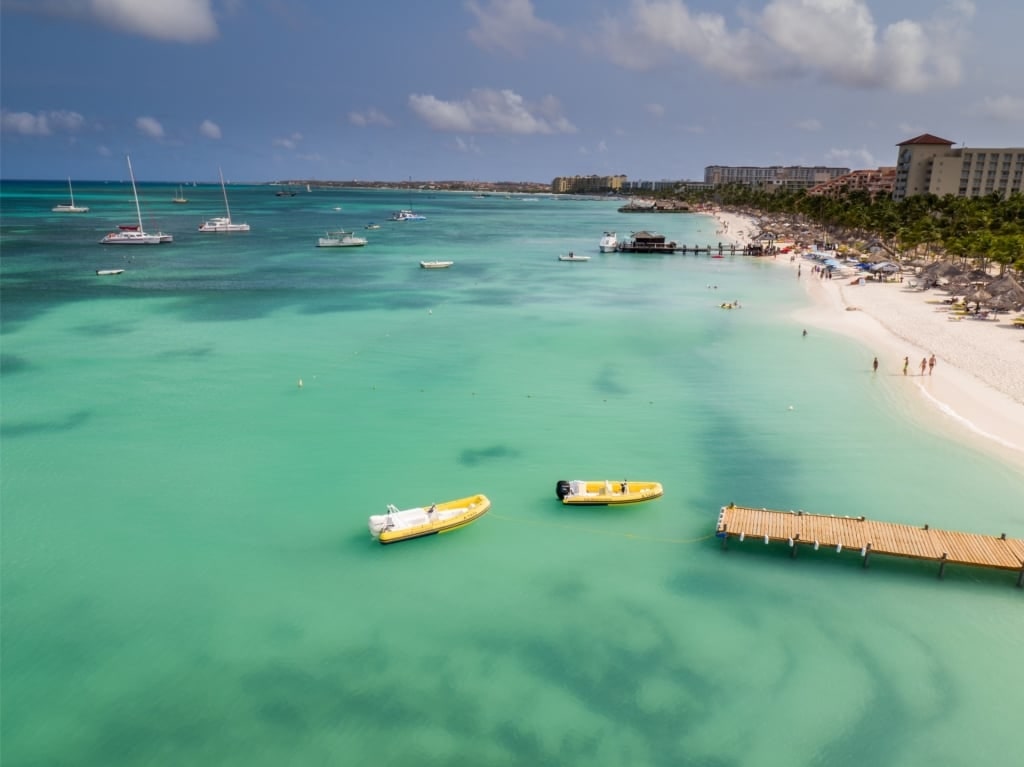
Aruba
Aruba, Bonaire, or Curaçao might look the same at a glance, but there are small subtleties you’ll notice in terms of the landscape. I remember visiting Curaçao for the first time and being surprised by its much hillier terrain. Curaçao has a desert-like climate and landscape, with limestone cliffs and valleys. In contrast, the terrain in Aruba and Bonaire is mostly flat.
In Aruba, the beaches are wide and resort-oriented, while in Bonaire, the beaches are smaller and have a more local, untouched feel. Beaches in Curaçao are definitely a draw, but the real highlight is the abundance of offshore snorkeling and diving spots, such as Cas Abao and Playa Porto Mari.
What are the ABC Islands known for?
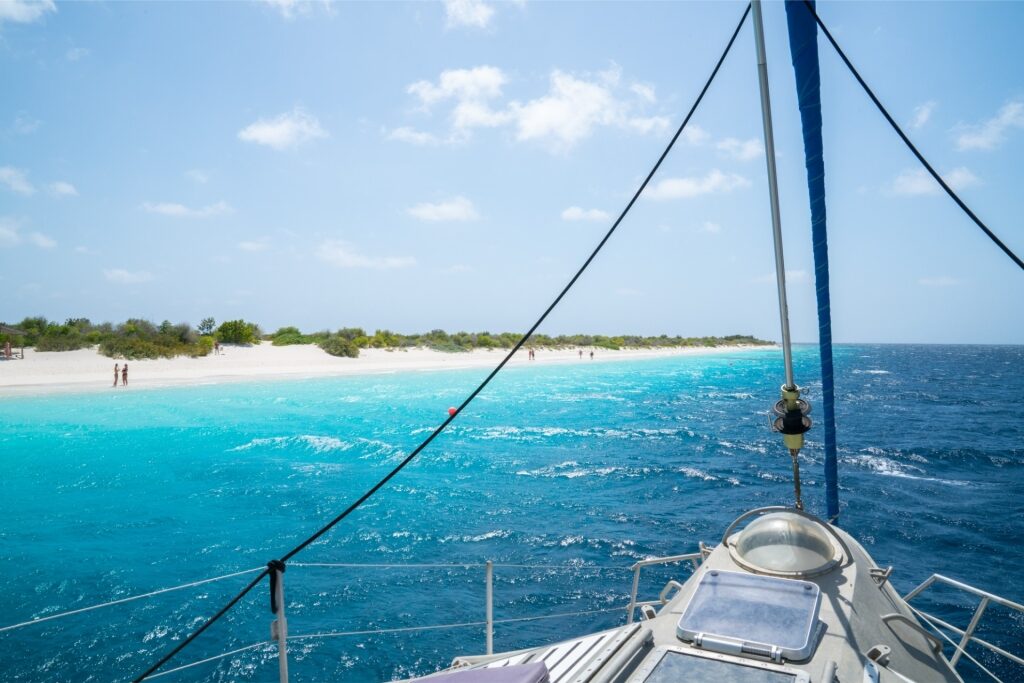
Klein Bonaire
Aruba, Bonaire, and Curaçao are known for many things, but perhaps none more than their famous white-sand beaches and turquoise waters.
First-time as well as more seasoned travelers head to the ABC Islands for diving as well. Diving in Aruba takes you past some very impressive shipwrecks, including the Antilla wreck, while Curaçao is home to colorful reefs and the Blue Room Cave, which you can reach by boat or kayak. On Bonaire, there are numerous snorkel sites, such as Klein Bonaire and 1,000 Steps.
Travelers also come to the ABC Islands for their culture. Despite being located in the Caribbean just off the coast of Venezuela, Aruba, Bonaire, and Curaçao have a unique blend of cultures. From the languages spoken to the food cooked at local restaurants, there’s a distinct mix of Dutch, African, and Latin American influences throughout.
Are the ABC Islands Dutch?

Willemstad, Curaçao
Yes, Aruba, Bonaire, and Curaçao are Dutch islands, as they are part of the Kingdom of the Netherlands. That said, Bonaire is considered a special municipality of the Netherlands, while Aruba and Curaçao are autonomous constituent countries within the Kingdom.
For first-time travelers, this can be confusing, as it’s not every day you hear Dutch being spoken outside of Europe. While Dutch is technically the official language in the ABC Islands, you’ll hear plenty of Papiamento as well as Spanish and English.
Which is better, Curaçao or Aruba?
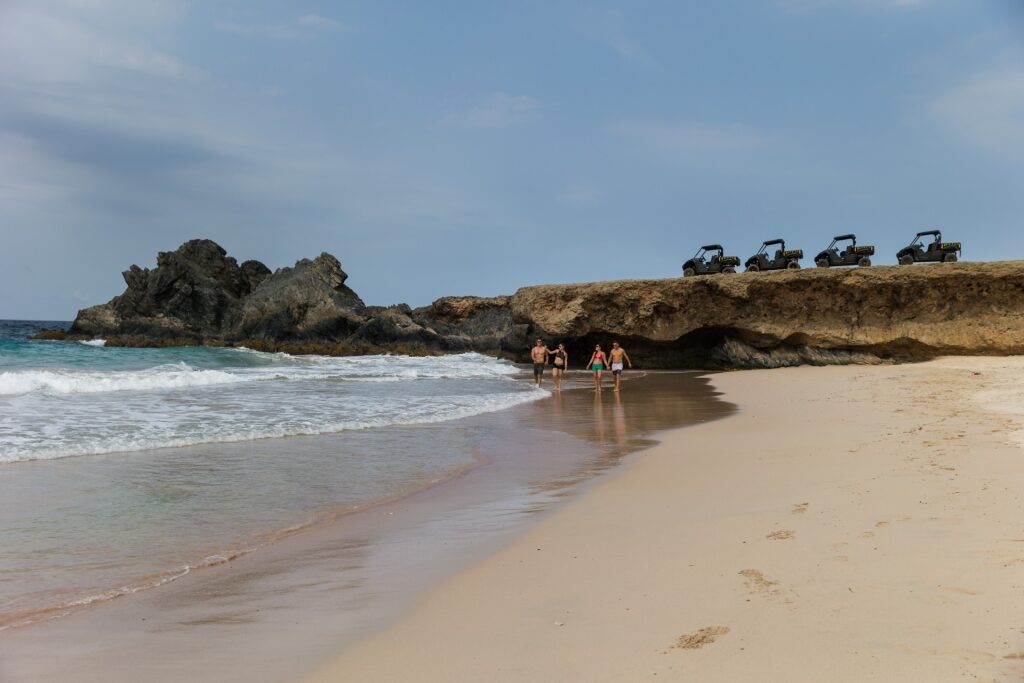
Aruba
Choosing whether to visit Curaçao or Aruba really comes down to your travel style and what kind of vacation you’re hoping to have. As noted above, Aruba has long been a popular destination for travelers worldwide, resulting in the development of more infrastructure. Curaçao will likely appeal more to travelers interested in history, local culture, and colonial architecture.
What is the best time of year to visit ABC Islands?

ATV ride in Aruba
One of the benefits of traveling to the ABC Islands is that they’re located outside the hurricane belt, meaning there’s really no “wrong” time to visit.
Of course, many travelers plan their trips between December and March, mostly to escape the cold winter weather in the U.S. If you have flexibility in your schedule and want to avoid the high-tourism season, your best bet is to plan your trip between April and August. The weather remains warm and sunny, with fewer crowds.
What do they eat in the ABC Islands?
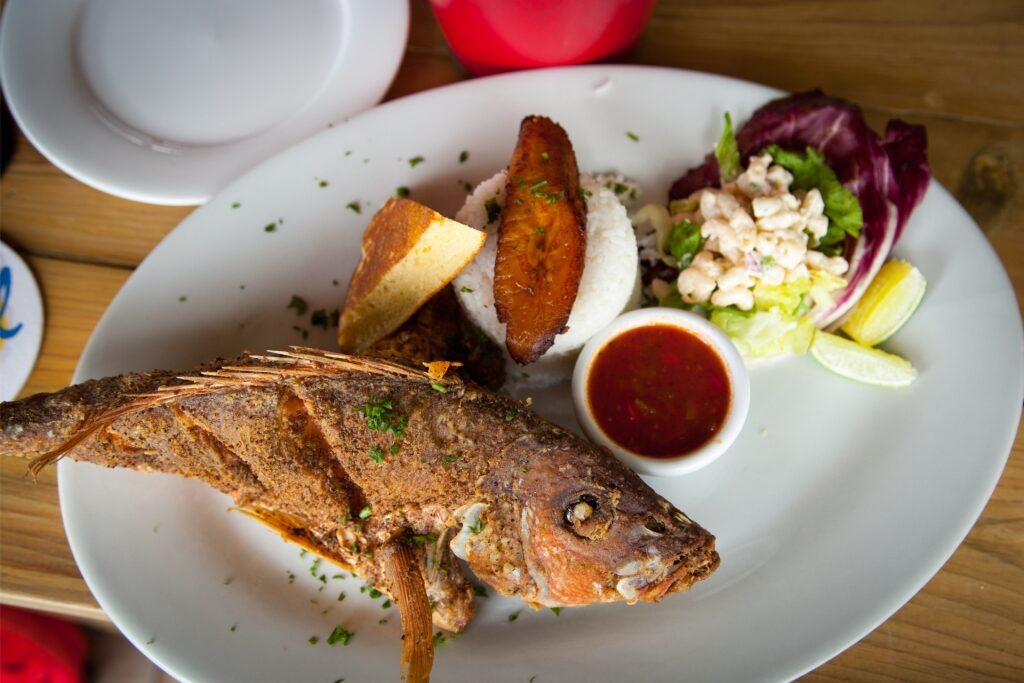
Fried fish
With a blend of Dutch, Caribbean, Latin, and Creole cultural influences, the ABC Islands offer a wide variety of delicious dishes to try.
Fresh seafood is always on the menu and is a refreshing option on a hot day, especially compared to heartier local dishes like stoba, a stew made with beef or sometimes goat. Another flavorful dish is keshi yena, a baked stuffed cheese filled with spiced meat like chicken or beef.
As for snacks, try bitterballen, a Dutch favorite that consists of crispy fried meatballs served with mustard, or pastechi, a local pastry filled with cheese, meat, or fish.
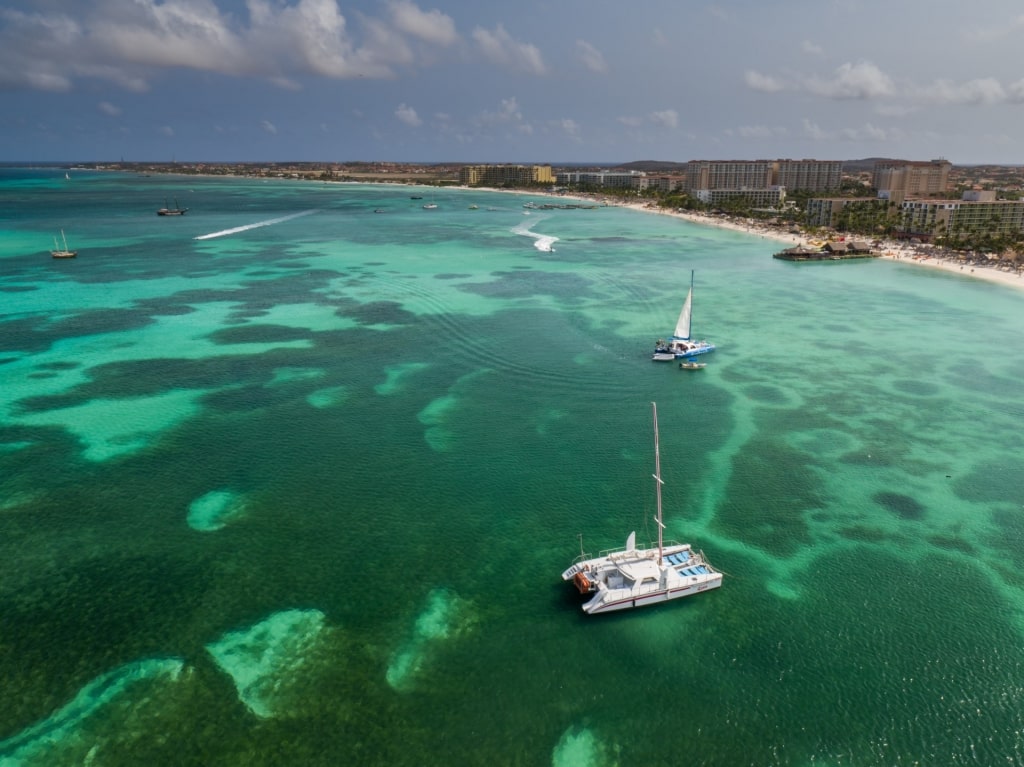
Aruba
Discover these beautiful islands for yourself. Browse Celebrity’s cruises to the ABC islands and book your dream vacation today.


